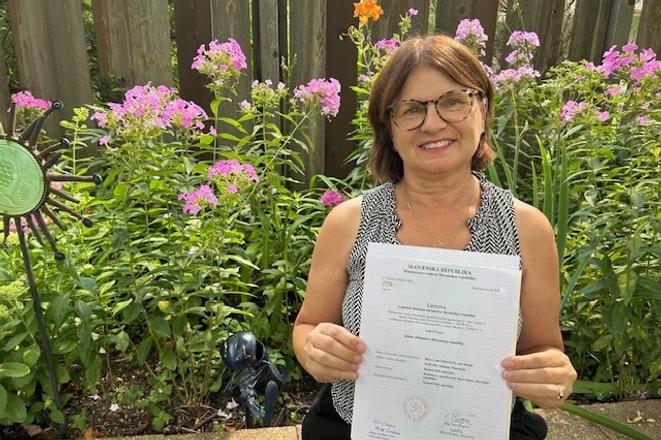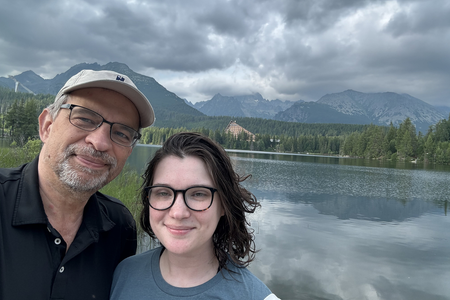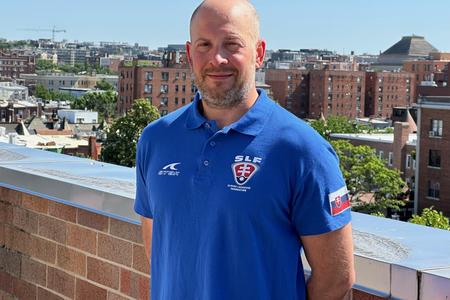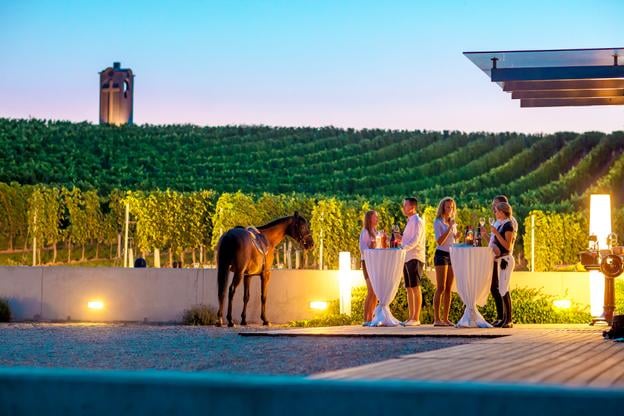You can read this exclusive content thanks to the FALATH & PARTNERS law firm, which assists American people with Slovak roots in obtaining Slovak citizenship and reconnecting them with the land of their ancestors.
Bryndzové halušky is one of those Slovak dishes that are described as an acquired taste, mainly due to the taste of bryndza, a special soft crumbly cheese made from sheep milk. But Myra Grignon, a third generation Slovak by descent, very much enjoyed the dish when she tasted it in Slovakia.
"I had it four times when we were there last time in January and February. It was so good! I love bryndza," she tells The Slovak Spectator.
Unfortunately for her, back home in St. Paul, Minnesota, there is no bryndza cheese to be had and when she cooks bryndzové halušky herself, she has to make do without one.
"I try to use other cheeses we have, but it's not the same. Definitely not the same."
Actually, this is not the only Slovak dish that Myra Grignon makes, as she enjoys cooking and baking from recipes handed down by her mother. She even tries to pass them down to her relatives; Myra made a cookbook for her family, compiling all the old recipes along the regular ones.
No idea about her past
For a long time, Grignon did not know what Slovak roots she had. Her grandparents on both sides of the family that had emigrated from Slovakia in early 20th century passed away before she was born. Moreover, her parents did not talk much about it.
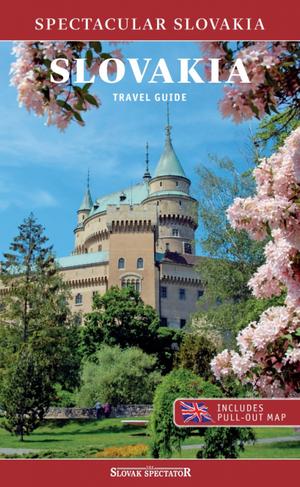
"They spoke Slovak to each other when they didn't want any of us kids to know anything. But no, they didn't tell us much " she says, adding she doesn't even know their reasoning. However, she does remember her mother travelling to Canada to visit relatives that had immigrated from Slovakia. Also, her mother would write letters to her relatives in Slovakia but never shared what was discussed. She was young back then and had no interest in learning more, which she now regrets.
You may remember lawyer and former lacrosse player Gregory Tears from an earlier installment of this series. His grandmother and mother spoke Slovak when they were together, but not when they were with the children. He believes the reason was because his parents wanted their kids to grow up as American citizens.
Grignon learned more about her maternal history from her cousin in the US and distant cousins in Slovakia on her paternal side.
She found out that her father's relatives were from the village of Lendak, located under the Belianske Tatry mountain range. They emigrated in 1900 and 1901, while her mother's relatives hailed from the town of Bardejov, northeastern Slovakia and moved out in 1900 and 1903. As with many other emigrants, they started out in Pennsylvania, working in the coal mines. Then, for reasons unknown to Grignon, they moved to Moquah, a Slovak community in northern Wisconsin near Lake Superior where they had a farm, which now belongs to Grignon's brother.
There is a monument in Moquah bearing names of its pioneers, with Grignon's paternal grandparents and parents listed among them. There is still the founding St. Peter and Paul Catholic Church that her family attends.
She then hopped on Ancestry.com and started researching her family's history.
"When I get on Ancestry.com, four hours later and I'm still looking at it, digging up records. I have so many binders of information. I'm just intrigued by it," Grignon says.
Grignon has a friend who shares a similar background; they grew up together, going together to schools, college, and now live just a few kilometres apart, their lands in Moquah butting each other. Interestingly, two of their grandfathers were practically neighbours in Slovakia, then they moved to Wisconsin and became neighbours once again.
Keeping in touch with relatives
Thanks to this, much to her surprise, she found out she still has relatives in Slovakia. When she reached out to them, they were just as surprised by the revelation. She visited them in 2001 and then again in 2023 and 2024.
"They welcomed me with open arms. They could not have been kinder, let us stay in their homes. They gave us gifts, food, and shots of vodka, it was very nice. They were so happy to have someone from America come and visit them," she recalls, adding they keep in touch via emails, texts, Facebook and WhatsApp.
She learned that her paternal great-grandfather was a farmer on land owned by Prussian Count Christian Hohenlohe, who owned a large amount of land in the Belianske Tatry mountain range in northeastern Slovakia. Now, Grignon's fourth cousins own the land.
"It was incredible to discover my Slovak roots. Both my parents passed away about 25 years ago. This is a big tribute to them. I found out that our traditions that my parents instilled on me are similar to the traditions my relatives in Slovakia keep. I'm very happy to be able to pass that on to my nieces and nephews since I don't have children."
These traditions are mostly related to holidays such as Christmas and Easter.
"On Christmas, we have oblátky (wafers) with honey, we do the prayer, we have pirohy (pierogi) and shots. When I was growing up, my brothers would go cut down the tree on Christmas Eve day, we do this on our farm, and then decorate it. We go to mass at midnight. I try to keep the traditions going and try to make all the dishes," she says. In addition, Grignon prepares traditional baked dough balls known as bobaľky (in some places called opekance or pupáky that can be sweet or savoury) with poppy seeds, and mushroom soup.
When it comes to Easter, it's decorating eggs, fasting, going to church.
"We have pirohy again. Those are the only two times a year that we have them."
A lot of people in Moquah still keep these traditions, but local to that community.
As for other dishes, she prepares holúbky (cabbage rolls).And although not originally Slovak, she loves langoš as well.
It takes a lot of money, paperwork
With the exception of one of her nieces, Grignon is pretty much the only one in her close family who researches her family history and pursues the Slovak citizenship.
"I mean, they're interested in it, but they don't want to put in all the work digging through records because it's very time consuming," she explains.
To give you an idea of what it took Grignon to get to where she is now, she had to hire a Slovak genealogist to help her find some of the birth and death records, because she couldn't do it on her own. One of her cousins in Slovakia also helped with obtaining some information. For example, the cousin found a land deed that Grignon's great-grandfather owned, and that he gave the land to Grignon's great aunt, which was unusual for the time to give land to a female.
She also had to leaf through court records in Wisconsin, and travel to the embassy in New York. Then she could start piecing everything together. It took a lot of money and paperwork.
"I did take beginner lessons in Slovak. Obviously, it didn't work," she says jokingly, as the interview was in English. But she admits that she is thinking about taking level one again this fall because she forgot everything. Still, about a month ago when she made the oath for the Slovak citizenship in New York, she had to say it in Slovak. Grignon repeated the oath and, despite a strong American accent, it was easily understandable.
"I was hoping I could make the oath in Slovakia, but since I requested the citizenship in New York at the embassy I had to make the oath there," she says.
When asked about why she wants Slovak citizenship, Grignon says she wants to honour her parents and grandparents while keeping the traditions alive.
"Maybe move or retire to Slovakia. I wouldn't mind living there for 5-6 months and then living here for the remaining year," she says.
Spectacular Slovakia travel guides
A helping hand in the heart of Europe thanks to our Slovakia travel guide with more than 1,000 photos and hundred of tourist spots.
Our detailed travel guide to the Tatras introduces you to the whole region around the Tatra mountains, including attractions on the Polish side.
Lost in Bratislava? It's impossible with our City Guide!
See some selected travel articles, podcasts, traveller infoas well as other guides dedicated to Nitra, Trenčín Region, Trnava Region and Žilina Region.


